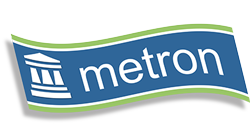The Unsung Hero of IT: The Capacity Manager. Know them, support them and use them.
Dear CIO,
As
you know there are people in our IT department that make sure the company is
running smoothly every day. You’ll be
familiar with the people managing the Service Desk team, and the software that
they use to make the services you are responsible for efficient. An Unsung Hero in most IT departments is the
Capacity Manager. If he gets his job
wrong, none of us know until it’s too late, and it affects every customer,
every employee and ultimately, the bottom line.
Capacity
Management and Planning affects every system in the company. A good Capacity Manager knows the dull and
detailed stuff so others don’t have to: how many transactions every service in
your company is currently handling; what the transaction times are for each
type. They also know how many
transactions the business can handle before performance degrades. They can tell you exactly what to do to make
services as efficient as they can be, to handle whatever the business throws at
us in the future.
I
call the Capacity Manager an ‘Unsung Hero’ rather than a ‘Superhero’ for good
reason.
The Superhero flies in when chaos already
reigns, disaster has already struck, and then stops things getting worse,
allowing life to return to normal. When
it goes wrong in IT terms, it’s painful.
Ask these guys: http://www.pcmag.com/article2/0,2817,2373494,00.aspThe
Unsung Heroes in capacity management avoid the disaster in the first
place. It might worry the Superhero as
it risks putting them out of a job, but it saves a lot of time and money not to
have the world collapsing around you.
It
ought to be more reassuring to know there is someone out there who is making
sure that all your plans will not be in the news due to “insufficient
capacity”, “unexpected demand” and “taking months to get up to speed.” When the new service goes live, If the
Capacity Manager doesn’t do their job in their usual quiet, understated
fashion, we’re usually looking at headlines we don’t like to see along with
emergency spend 6 to 12 months down the line and some uncomfortable meetings
with our stakeholders.
To
be the Unsung Hero, the Capacity Manager needs the ‘goods’: good processes in
the IT department, good tools and good data.
Perhaps the most heroic aspect of accomplishment for many of these Unsung
Heroes is that they have none of these.
This person, central to the success of your entire department, is often
working with a copy of Excel, and a few “cast offs” of tools purchased for
other teams to do other jobs and a collection of home grown scripts and ad-hoc
processes. Think how much more he could
achieve with the ‘goods’. Quality tools
and established processes might also allow a few more Unsung Heroes to emerge
from within your ranks as well, lessening your dependency on that one
individual.
It
can be hard enough gathering together the inputs to enable successful capacity
planning. Hopefully data about the
businesses plans for the year ahead comes from you or the application
owners. Some of it will be collected
from testing and existing live environments.
Its value is minimal if the Capacity Manager doesn’t have the tools to
process it and save the day, before the day has even started to go bad.
It
can be hard to spot the Unsung Hero.
Putting on a mask and wearing underwear outside their pants isn’t a good
look for most Capacity Managers.
This Unsung
Hero should get the same or more recognition as the Superhero when it comes to
IT performance and capacity. Let’s find him
before the next disaster http://blogs.thisismoney.co.uk/2011/06/tesco-banks-big-apology-wont-stop-saver-exodus.html .....and make sure he has the processes and tools to ensure
our world looks good all the time.
Phil Bell
Consultant


